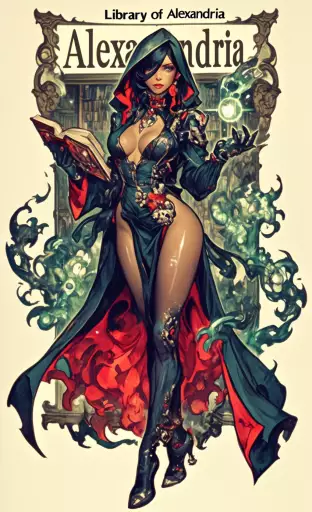Explore the Best AI Image Gallery

AI: The Artists New Muse
The world of graphic design is on the brink of a revolution, driven by the rapid advancements in artificial intelligence (AI). This powerful technology is not just automating tasks but also reshaping the very creative process itself. From generating stunning visuals to personalizing user experiences, AI is becoming an indispensable tool for designers across industries.
Expanding Creative Horizons
AI-powered design tools offer a plethora of possibilities, empowering designers to push the boundaries of their creativity:
- Content Creation: AI can generate original images, illustrations, and even logos based on textual prompts. This frees up designers to focus on conceptualizing ideas and refining creative direction.
- Personalized Design: AI algorithms can analyze user data and preferences to create customized designs that resonate with individual tastes. This is particularly valuable for marketing and branding campaigns.
- Streamlined Workflow: Repetitive design tasks, such as resizing images or creating color palettes, can be automated by AI, allowing designers to allocate their time to more complex and strategic projects.
AI-Powered Design Tools
Several innovative platforms are harnessing the power of AI to revolutionize graphic design:
- DALL-E 2 (OpenAI): This AI system generates realistic and imaginative images from textual descriptions, opening up endless possibilities for conceptual design.
- Midjourney: Accessible through a Discord server, Midjourney allows users to create stunning artistic visuals based on text prompts. It has gained popularity for its ability to produce unique and surreal imagery.
- Canva AI: Integrated into the popular Canva design platform, this tool offers features like image generation, text-to-image conversion, and design suggestions powered by AI.
Ethical Considerations
While AI presents exciting opportunities, it also raises important ethical considerations that designers must address:
- Copyright and Ownership: The question of copyright ownership for AI-generated content remains a complex legal debate. It is essential to establish clear guidelines and regulations to ensure fair attribution and protect the rights of both creators and users.
- Bias and Fairness: AI algorithms are trained on vast datasets, which can inadvertently perpetuate existing biases. Designers must be aware of these potential biases and strive to create inclusive and equitable design solutions.
- Transparency and Explainability: The decision-making processes of complex AI models can be opaque. It is important to promote transparency in AI-driven design tools so that users understand how designs are generated and can identify potential issues.
The Future of Design
AI is poised to continue transforming the field of graphic design, blurring the lines between human creativity and machine intelligence. Here are some future trends to watch:
- Enhanced Collaboration: AI will act as a powerful collaborative tool, assisting designers in brainstorming ideas, exploring different concepts, and refining designs.
- Personalized User Experiences: AI-powered design systems will enable the creation of highly personalized user interfaces and experiences, tailoring content and aesthetics to individual preferences.
- Generative Design for Complex Problems: AI algorithms will be used to generate innovative solutions for complex design challenges in fields such as architecture, product design, and urban planning.
As AI continues to evolve, graphic designers must embrace this transformative technology, adapting their skills and workflows to harness its immense potential. The future of design is a collaborative journey between human ingenuity and artificial intelligence, where creativity knows no bounds.
](https://images.ai-img.art/thumbnails/150/bddf3ae4a232290858389b933c866ad3be429ef2e25c23a9f4d7713ed6e44d0b.webp)














](https://images.ai-img.art/thumbnails/150/f67d9af3398150f2ab1bcf250717fea134275e2ca896252b54a4d9bb3719f9ac.webp)
](https://images.ai-img.art/thumbnails/150/4289d1230b86a96c4d556636c3167bed0ef38f850826549517e4e45db4d87bf7.webp)






](https://images.ai-img.art/thumbnails/150/f9584153b4cddd8c9fab611dc10247549b275c59bc173251e37d0935874f9deb.webp)

](https://images.ai-img.art/thumbnails/150/008b5d5d49667cc2e93a5f8a8adfaa545963da99c39ff0901f5296294636400d.webp)








](https://images.ai-img.art/thumbnails/150/c2c9c48b38fae37f0a457b80b084ed01ba803810fc8f488c8f610c03abc74049.webp)






